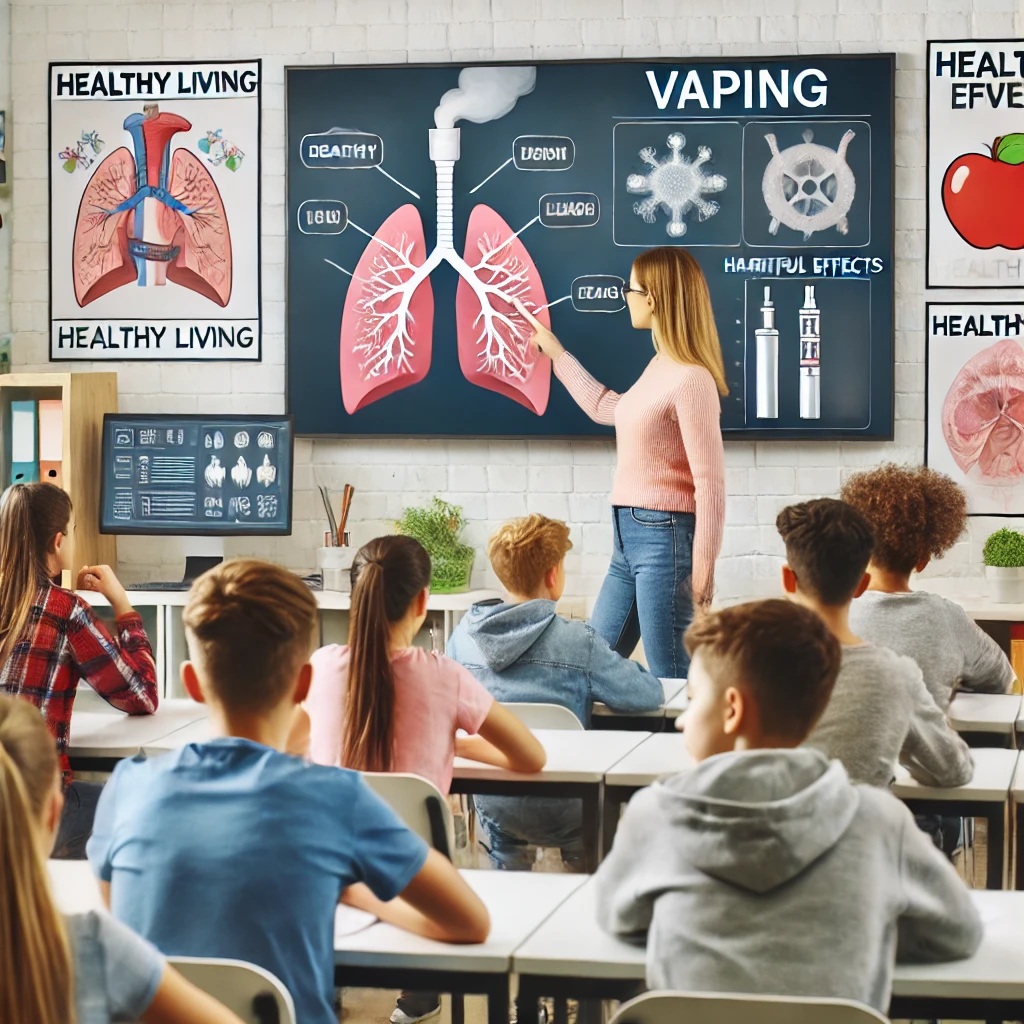Schoolchildren to Be Taught the Dangers of Vaping: A Crucial Step for Public Health

As the vaping trend continues to surge among young people, the education system is taking a proactive stance to combat this growing public health concern. Schools are now introducing comprehensive programs to educate children about the dangers of vaping. This initiative aims to curb the alarming rise in e-cigarette use among minors and promote healthier lifestyle choices.
The Rise of Vaping Among Youth
In recent years, vaping has become increasingly popular among teenagers. Marketed as a safer alternative to traditional cigarettes, e-cigarettes have gained a significant foothold in the youth demographic. The sleek, tech-savvy design of vape devices, coupled with enticing flavors like cotton candy and mango, have made them particularly appealing to adolescents. However, this trend is not without serious health implications.
Health Risks Associated with Vaping
Contrary to popular belief, vaping is not a harmless activity. While it is true that e-cigarettes contain fewer toxic substances than traditional cigarettes, they still pose significant health risks. Some of the primary concerns include:
- Nicotine Addiction: Most e-cigarettes contain nicotine, which is highly addictive. Early exposure to nicotine can affect brain development in teenagers, leading to cognitive and behavioral issues.
- Lung Damage: Vaping can cause severe lung injuries, as evidenced by the outbreak of e-cigarette, or vaping, product use-associated lung injury (EVALI). The inhalation of harmful chemicals found in vape liquids can lead to chronic respiratory conditions.
- Heart Disease: Nicotine and other chemicals in e-cigarettes can increase the risk of cardiovascular diseases. Studies have shown that vaping can lead to increased heart rate and blood pressure.
- Chemical Exposure: Vape liquids often contain a mix of harmful substances, including heavy metals, volatile organic compounds, and cancer-causing agents. These chemicals can have long-term detrimental effects on health.
Educational Programs in Schools
In response to these alarming trends, schools across the country are implementing educational programs focused on the dangers of vaping. These programs aim to provide students with accurate information and dispel myths surrounding e-cigarettes. Key components of these educational initiatives include:
- Interactive Workshops: Schools are organizing workshops that involve interactive sessions with healthcare professionals. These sessions help students understand the science behind vaping and its effects on the body.
- Peer Education: Peer-led programs are being introduced where older students educate younger ones about the risks of vaping. This approach leverages the influence of peers to encourage healthier choices.
- Parent Involvement: Schools are also involving parents in the educational process. Informative sessions and resources are provided to help parents discuss vaping with their children and reinforce the message at home.
- Curriculum Integration: Vaping education is being integrated into the health and science curriculum. This ensures that students receive consistent information throughout their schooling years.
The Role of Technology in Vaping Education
Technology plays a crucial role in enhancing the effectiveness of vaping education programs. Schools are using digital platforms to deliver engaging content and interactive modules. Virtual reality (VR) simulations, for example, allow students to visualize the impact of vaping on their lungs. Additionally, educational apps and online quizzes provide students with a fun and interactive way to learn about the dangers of vaping.
The Impact of Vaping Education on Public Health
The introduction of vaping education in schools is expected to have a significant impact on public health. By equipping students with the knowledge to make informed decisions, these programs aim to reduce the prevalence of e-cigarette use among minors. The long-term benefits include:
- Reduced Health Care Costs: Preventing vaping-related illnesses can lead to a decrease in healthcare costs associated with treating respiratory and cardiovascular diseases.
- Healthier Youth Population: Educating children about the dangers of vaping promotes healthier lifestyle choices, leading to a generation of healthier adults.
- Decreased Addiction Rates: By addressing nicotine addiction early, these programs can help reduce the overall addiction rates among young people.
Conclusion
The move to educate schoolchildren about the dangers of vaping is a critical step towards safeguarding the health of future generations. As schools continue to roll out these comprehensive educational programs, it is essential for parents, educators, and communities to support these efforts. Together, we can combat the vaping epidemic and promote a healthier, nicotine-free future for our youth.
By prioritizing vaping education, we not only protect our children but also invest in a healthier, more informed society.
If you are having any of the issues mentioned in this article, please reach out to us, and we will do our best to assist you.


